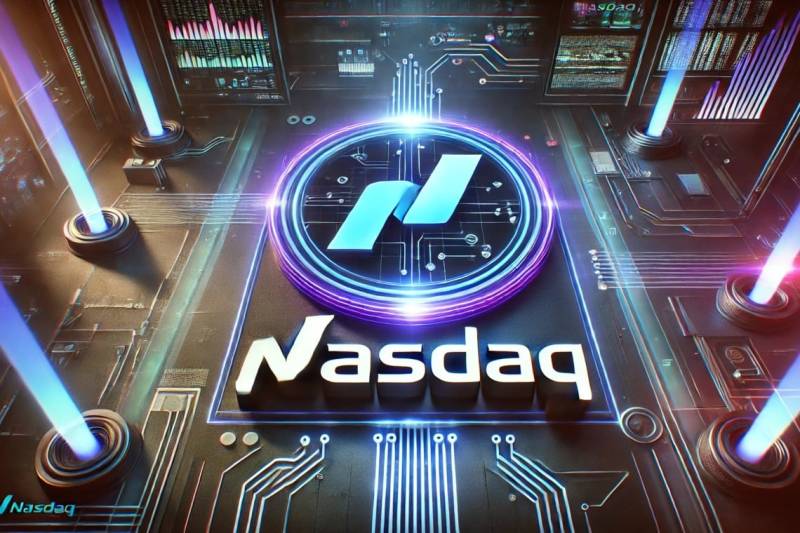 |
|
 |
|
 |
|
 |
|
 |
|
 |
|
 |
|
 |
|
 |
|
 |
|
 |
|
 |
|
 |
|
 |
|
 |
|
Cryptocurrency News Articles
Orchestration: The Blockchain Breakthrough That Makes Cross-Chain DeFi a Reality
Feb 25, 2025 at 10:25 pm
Moving assets between blockchains feels like running an obstacle course. Despite advances in interoperability, from Cosmos IBC to cross-chain bridges

Despite advances in blockchain interoperability, executing complex DeFi strategies across chains remains a time-consuming and tedious task. Moving assets between networks often requires multiple wallets, numerous confirmation screens, and a level of patience that would make a monk proud. But what if there was a way to automate these sequences of cross-chain operations, making them as efficient and seamless as possible?
Enter orchestration. Orchestration approaches interoperability differently. Instead of just connecting chains, it automates entire sequences of cross-chain operations. The technical innovation here is Smart contracts that persist across multiple blocks, maintaining state and responding to events over time. This simple change promotes powerful capabilities.
1. Multi-Block Execution
Traditional smart contracts must complete their work in a single block. Orchestrated contracts, however, can span multiple blocks, monitoring conditions and executing steps automatically. Early implementations show the impact like Fast USDC, which slashed cross-chain transfer times from 16 minutes to just 2 minutes.
2. Cross-Chain Automation
Consider Calypso’s implementation, which utilizes Agoric’s Orchestration API to simplify complex DeFi interactions. Traditionally, staking assets across chains involves multiple steps, bridging tokens, swapping assets, and manually approving transactions. With orchestration, what used to take six separate steps now requires just a single click. The smart contract automatically handles price checks, asset transfers, confirmations, and staking execution behind the scenes.
3. Timer Services
Smart contracts can now schedule actions and respond to time-based triggers. This enables automated portfolio rebalancing, periodic payments, and time-sensitive DeFi strategies without constant monitoring.
The innovation lies in how these systems work together. Agoric’s implementation uses JavaScript smart contracts with async/await, a feature that makes multi-step blockchain transactions behave more like regular web applications, reducing complexity for developers. Staking the BLD token secures this execution environment, and ensures orchestrated transactions finalize correctly across multiple blocks.
The true power of orchestration is already visible. One of the most exciting applications comes from Native, which is using Agoric’s Orchestration API to enable direct Bitcoin transactions within the Cosmos ecosystem, without wrapping or bridging. Unlike traditional solutions that rely on wrapped BTC or centralized custodians, Native’s approach leverages Zero Trust Architecture to seamlessly integrate Bitcoin with Cosmos-based DeFi. This removes friction for Bitcoin holders looking to engage with Cosmos applications while maintaining Bitcoin’s original security properties.
Meanwhile, Union’s integration is using zero-knowledge cryptography to enable trustless, efficient bridging between appchains and L1s/L2s. This removes the need for third-party intermediaries, reducing risks and improving security in cross-chain transactions. Elys Network demonstrates practical applications in DeFi, handling complex operations like LP management and derivatives trading across chains smoothly. Their platform shows how orchestration can deliver CEX-like experiences in a decentralized environment.
The key takeaway? Orchestration isn’t just improving blockchain efficiency, it’s opening up new possibilities for cross-chain DeFi, Bitcoin integration, and trustless interoperability.
The true power of orchestration becomes clear when we look beyond simple transfers. Take DeFi, for instance. Today’s yield farmers often miss opportunities because they can’t move quickly enough across chains. Orchestration changes this entirely. Instead of manually hunting for yields, smart contracts can automatically shift liquidity to the most profitable opportunities across multiple chains. When market conditions change, these contracts adjust strategies in real time, maximizing returns while you sleep.
For DAOs, orchestration solves a persistent headache: managing operations across different blockchain ecosystems. Imagine a DAO that needs to pay contributors in different tokens across various chains. Without orchestration, this means hours of manual transfers and endless transaction signing. With it, the entire process runs automatically, from converting tokens to distributing payments, all executing precisely when needed. Treasury management becomes fluid, with funds moving efficiently between chains based on the DAO’s needs.
The gaming and NFT space perhaps shows the most exciting possibilities. Imagine playing a game where your character’s sword, earned on one blockchain, easily travels with you into another game on a different chain. No more copying assets or creating wrapped versions. Artists can sell their work across multiple marketplaces simultaneously, with royalties automatically distributed to their wallets regardless of where the sale happens. This is beyond moving NFTs between chains but creating truly interconnected digital worlds.
We’ve cracked the code on moving assets between chains. But that’s just the beginning. The real excitement is the ability to build applications that handle complex operations as smoothly as your favorite mobile apps.
The momentum is building. Right now, 60+ teams are already pushing the boundaries of what’s possible. Look at what’s happening with Union, Native, and Elys Network, they’re showing how these tools solve real problems for real users.
We’re not just looking to connect different blockchains anymore. That problem’s largely solved. The real challenge, and opportunity, is making them work together so well that users never
Disclaimer:info@kdj.com
The information provided is not trading advice. kdj.com does not assume any responsibility for any investments made based on the information provided in this article. Cryptocurrencies are highly volatile and it is highly recommended that you invest with caution after thorough research!
If you believe that the content used on this website infringes your copyright, please contact us immediately (info@kdj.com) and we will delete it promptly.
-

-

-

- Mutuum Finance (MUTM) Emerges as a High-Potential Alternative to Solana (SOL) as the Crypto Market Shifts toward Real-World Utility
- Feb 26, 2025 at 01:45 am
- Mutuum Finance (MUTM) is capturing investor attention, currently in the second phase of its presale at $0.015. This decentralized lending platform is positioning itself as a high-potential alternative for those seeking explosive growth
-

-

-

- Whales Load Up on ONDO Despite Market Decline—Here's Why
- Feb 26, 2025 at 01:25 am
- ONDO's price has fallen below crucial support levels, signaling persistent bearish pressure. Despite this decline, buying activity from whales and smart traders suggests potential opportunities. Market indicators point to an oversold condition, raising the possibility of a short-term rebound.
-

-

-





















































